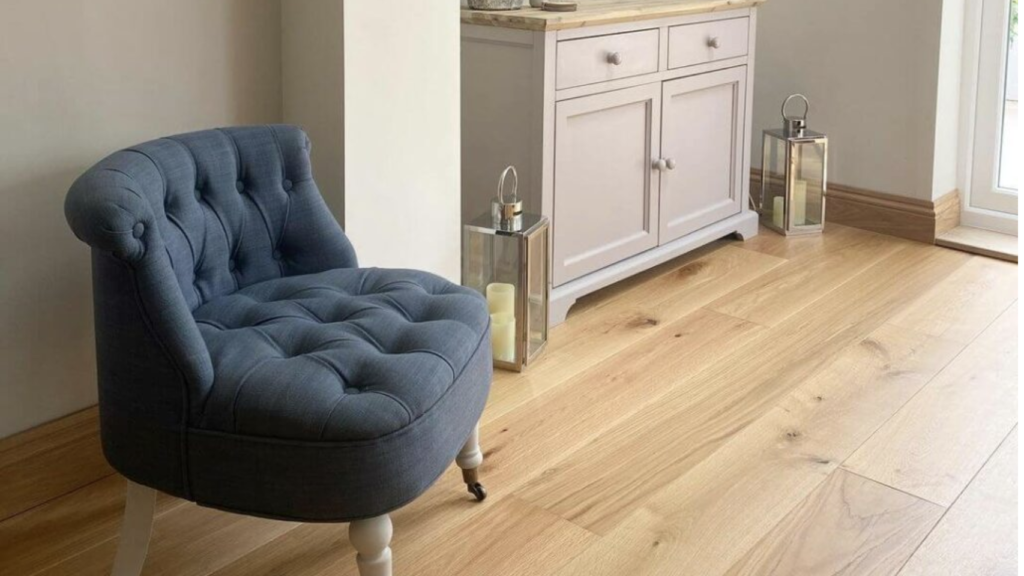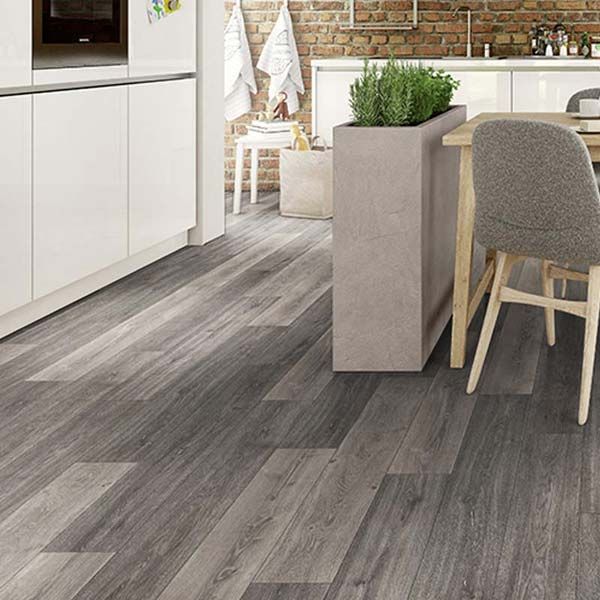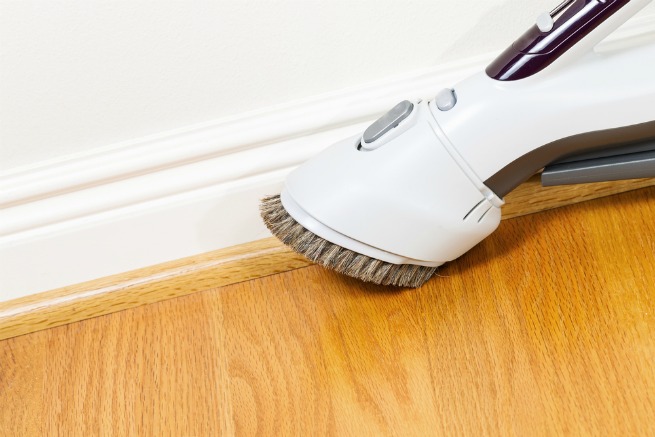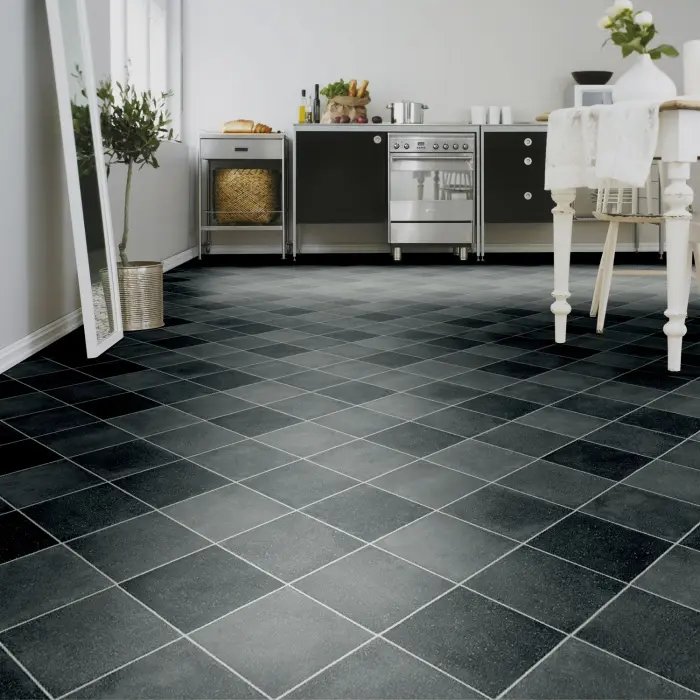As energy costs rise, you’ll want to take any available steps you can take to keep your home cosy. Looking at how your windows, walls and ceilings are insulated may be the first priority you consider when temperatures drop. However, choosing the right flooring can also help you keep the cold and higher gas or electricity bills at bay.
Carpets are cosy and thick, making them the go-to choice for homeowners looking to keep heat in their rooms. However, carpets can attract stains and aren’t as durable as hard floors, meaning it's not the best warmest flooring option for kitchens and bathrooms. We’ve put together some suggestions to help you find a practical wood, laminate or vinyl floor that keeps the heat in.
Do Real Wood Floors Stay Warm?
Real wood naturally absorbs and retains heat for a long time thanks to its tough outer layer, meaning it will feel warm underfoot for the majority of the year. Heat can also pass through and between hard wood flooring planks, helping with circulation across your home. In fact, real wood flooring is better at retaining and circulating heat than carpet, making it ideal for combining great looks and practicality.
Engineered wood floors are also more stable and resistant to changes in temperature and conditions. Its multiple layers means it will conduct heat well while being less likely to warp or bend. However, with any wood floors, it’s essential that you use the correct underfloor insulation and fill in any gaps with appropriate filler. This will prevent cold air from entering your space.

Is Laminate Flooring Colder Than Carpet?
Laminate flooring is widely considered to be colder than carpet. However, if you choose the right option and lay it correctly, it can feel comfortable underfoot. Plus, it has the extra benefits of being practical and looking great. For optimal warmth, choose a laminate with a thickness of between 10mm and 12mm. The backing layer on these planks offers more cushioning and insulation. This combined with a warmer shade creates a cosy effect overall.
Installing a laminate floor correctly is also essential to maintaining warmth. Using an insulated underlay with a high TOG rating will stop cold coming through from the base floor. It’s also a good idea to seal as many gaps as possible to keep the heat in and the chill out. As well as accurately laying the floor to fit your room as tightly as possible, you can use beading to cover expansion gaps at the edge of the room and stop air flow.

Will Vinyl Flooring Retain Heat?
Vinyl flooring will retain some heat thanks to its layered construction. Luxury vinyl tiles (LVT) offer extra warmth and comfort thanks to their thicker, more cushioned backing. With no need for underlayment, you can also get waterproof LVT floors to transform cold kitchens and bathrooms without worrying about warpage or durability. There’s also a range of shades and designs to choose from, helping you add warmth and cosiness to any room.
Alternatively, if you want a more budget-friendly option, sheet vinyl can be combined with a thick underlay to create a comfortable, well-insulated floor. Fitted up to the edge of the room, it also means there are very few gaps for cold air to flow through. This is unlike LVT, which needs an expansion gap that will have to be covered with beading to minimise heat loss.
Which Floors Are Compatible with Underfloor Heating?
Most types of laminate, vinyl and engineered wood floors are compatible with underfloor heating. However, you should check the specific features of a product before you buy it to ensure it’s suitable. Installing underfloor heating under real wood should be avoided, as this floor is more sensitive to temperature changes and may warp or bend.
Installing underfloor heating systems with a compatible hard floor can help enhance warmth and comfort, particularly in cold rooms such as kitchens and bathrooms. It’s also an energy efficient way to maintain a consistent temperature throughout the home. For even greater efficiency, you can install underfloor heating just in the coldest areas of your room, so you don’t spend extra warming up spaces that don’t need it.
Use Rugs and Underlay
Even if you choose a hard floor that’s good at retaining heat, installing it with a quality underlay or using rugs can reinforce its warmth. Having an insulation membrane between the base surface and flooring is particularly important in older homes which have wooden joints with insulation laid between the beams. In these cases, using an underlay under your new floor can trap more heat within your home.
As well as adding interest and creating different zones in your living space, laying rugs in particularly cold areas can provide underfoot comfort. Particularly in areas near external doors, they can bring a sense of immediate warmth as soon as you enter your house. Using beading on expansion gaps and putting draft excluders at the base of your internal doors can also stop cold air from spreading around your home at floor level.
Find the Warmest Flooring for Your Home
Choosing the right flooring is essential for keeping your house warm. Engineered wood, laminate and vinyl flooring offer various benefits that make them suitable options for cold rooms and winter months. By understanding their properties and installing them correctly, you can ensure a warm and comfortable home environment. To get advice tailored to your home, contact our expert team.
Join the gaps with beading

It’s always a good idea to seal as many gaps as possible to keep the heat in and the chill out. One idea is to create a seamless floor seal using beading alongside a laminate floor. (The beading is a strip that is designed to cover the expansion gap left around the edge of a room.) It is applied in such a way that the floor can still adapt to different temperatures while still reducing the amount of air that gets in and out. Our multiuse laminate beading options are designed to complement your choice of vinyl, such as this fabulous Ecostep Black White 019D Vinyl Cushion Floor.
Integrate underlay for old homes
The majority of modern homes have a solid (“fixed”) floor, made from concrete topped with foam insulation and a waterproof membrane. Conversely older homes usually have wooden joints with insulation laid between the beams. If your home is mature, then using an underlay alongside a floating wood (or wood effect) floor can trap more heat within your home. A product such as Aqua Plank Farmhouse Oak Herringbone Click Vinyl with its integrated underlay is ideal for creating a classic old-world look with none of the draughts.
Cushioned vinyl flooring for cold rooms

Cushioned vinyl flooring is a fantastic choice for warming up rooms that feel traditionally cold, such as bathrooms and kitchens. It is made from multiple layers to repel the water and the cold, while making it feel warm and soft when you walk on it. What’s more, you don’t need to add an underlay. Cushioned vinyl comes in a wide range of colours and effects to suit your look, from dark modern Texstep Bilbao 594 Cushioned Vinyl Flooring to light, bright grey stone effect tiles such as Smartstep Galeria 593 Vinyl Cushion Floor.
Still unsure on the best flooring to keep your house warm? Speak with one of our flooring experts on 0330 100 00 15.
